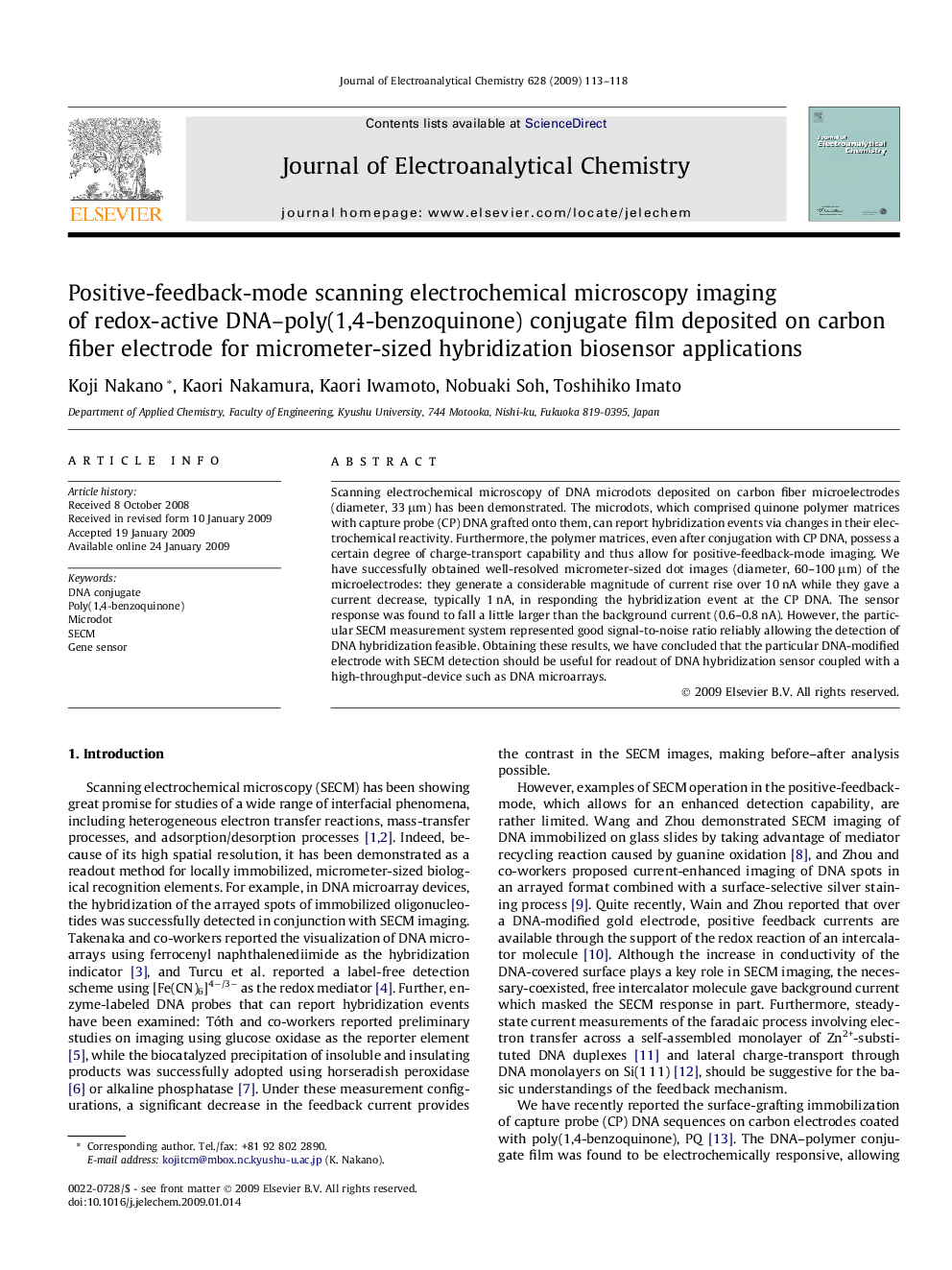| Article ID | Journal | Published Year | Pages | File Type |
|---|---|---|---|---|
| 220280 | Journal of Electroanalytical Chemistry | 2009 | 6 Pages |
Scanning electrochemical microscopy of DNA microdots deposited on carbon fiber microelectrodes (diameter, 33 μm) has been demonstrated. The microdots, which comprised quinone polymer matrices with capture probe (CP) DNA grafted onto them, can report hybridization events via changes in their electrochemical reactivity. Furthermore, the polymer matrices, even after conjugation with CP DNA, possess a certain degree of charge-transport capability and thus allow for positive-feedback-mode imaging. We have successfully obtained well-resolved micrometer-sized dot images (diameter, 60–100 μm) of the microelectrodes: they generate a considerable magnitude of current rise over 10 nA while they gave a current decrease, typically 1 nA, in responding the hybridization event at the CP DNA. The sensor response was found to fall a little larger than the background current (0.6–0.8 nA). However, the particular SECM measurement system represented good signal-to-noise ratio reliably allowing the detection of DNA hybridization feasible. Obtaining these results, we have concluded that the particular DNA-modified electrode with SECM detection should be useful for readout of DNA hybridization sensor coupled with a high-throughput-device such as DNA microarrays.
